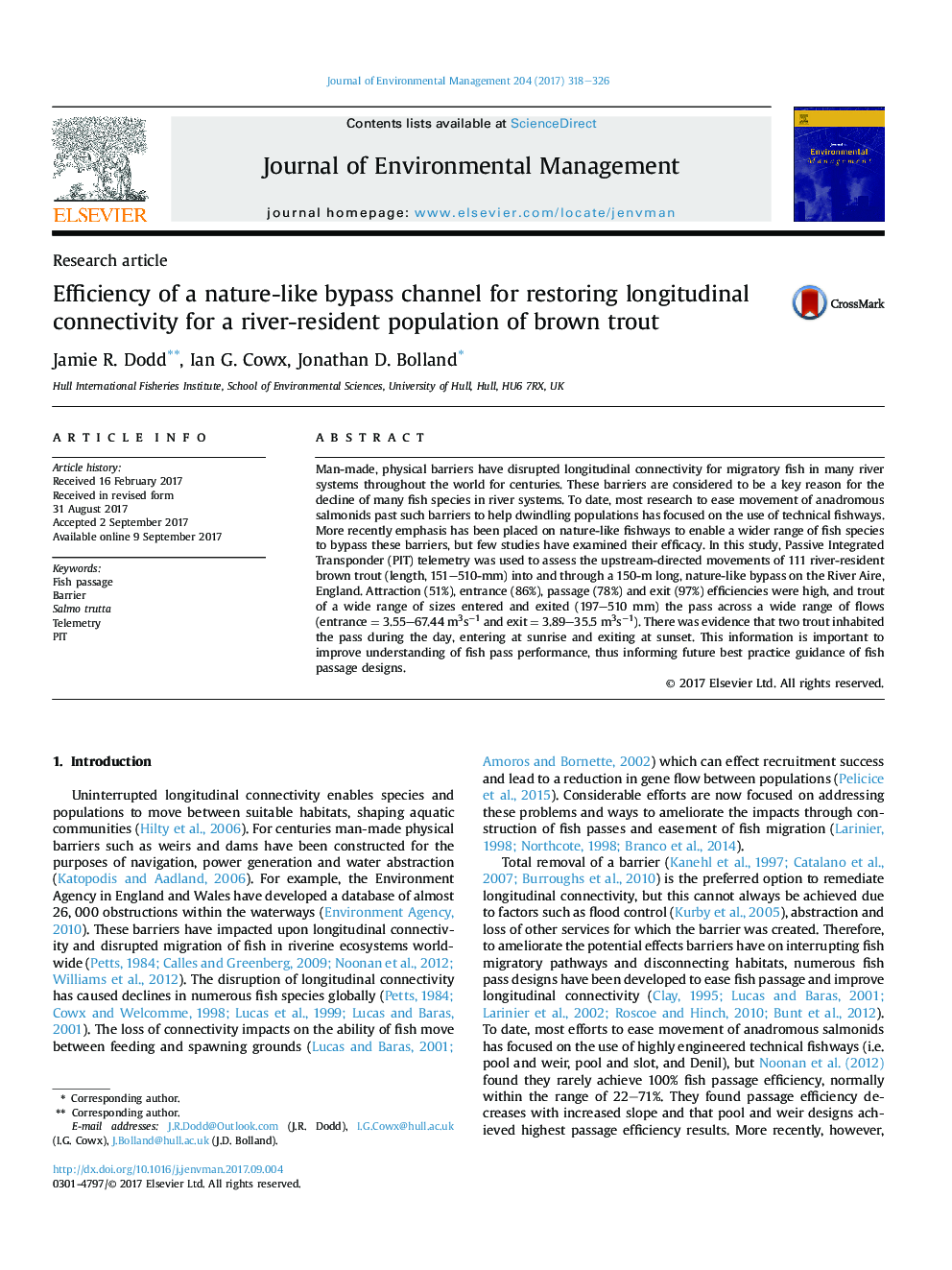| Article ID | Journal | Published Year | Pages | File Type |
|---|---|---|---|---|
| 5116269 | Journal of Environmental Management | 2017 | 9 Pages |
â¢Efficiency of a nature-like bypass for river-resident brown trout tested using telemetry.â¢Attraction, entrance, passage and exit efficiencies were high.â¢Small brown trout did not approach the bypass.â¢Ascents through the pass occurred across a wide range of flows and temperatures.â¢Fish occupied the pass during the day, entering at sunrise and exiting at sunset.
Man-made, physical barriers have disrupted longitudinal connectivity for migratory fish in many river systems throughout the world for centuries. These barriers are considered to be a key reason for the decline of many fish species in river systems. To date, most research to ease movement of anadromous salmonids past such barriers to help dwindling populations has focused on the use of technical fishways. More recently emphasis has been placed on nature-like fishways to enable a wider range of fish species to bypass these barriers, but few studies have examined their efficacy. In this study, Passive Integrated Transponder (PIT) telemetry was used to assess the upstream-directed movements of 111 river-resident brown trout (length, 151-510-mm) into and through a 150-m long, nature-like bypass on the River Aire, England. Attraction (51%), entrance (86%), passage (78%) and exit (97%) efficiencies were high, and trout of a wide range of sizes entered and exited (197-510 mm) the pass across a wide range of flows (entrance = 3.55-67.44 m3sâ1 and exit = 3.89-35.5 m3sâ1). There was evidence that two trout inhabited the pass during the day, entering at sunrise and exiting at sunset. This information is important to improve understanding of fish pass performance, thus informing future best practice guidance of fish passage designs.
